Design Thinking doesn’t need to be daunting. At the Minnesota ASUG event last Thursday, we conducted a 1 hour session where we all worked together and completed a full design. The session was a tremendous success with an overflowing room. Sadly, many future design thinkers couldn’t get in. So we’re sharing the full session here so everyone can get started!
Welcome!
Today’s session is live and interactive. So go ahead and print the Design Thinking Powerpoint. (yes, on paper)
By the end of the session today, you will have experienced the disruptive design process, Design Thinking. You will see how you can transform your approach to problem solving at your work and really make a powerful difference. You’ll soon imagine how quickly you can benefit from solving the real problems, with amazing design, and rapid results.
Quick Story
I went to school for computer science at the University of Minnesota. At the time (2000’ish) I was trained in proper waterfall methodology. Requirements-Design-Build-Test-Deploy. After school, I continued on to Accenture, where it was further reinforced with their variation of waterfall, ADM “Accenture Delivery Methodology.” And for years, sadly, as a developer, I got handed a technical spec, I developed to that spec, and then handed it off to testers when I was done. I had no idea who I was building this software for. I had no idea where it came from. And I didn’t really care at the time about where it went. It passed the “tests” and I went home at night after I checked all the boxes. But I knew something was wrong with this, and personally I never felt very fulfilled just being part of this machine.
The reason I love software development is that it gives me a tool to solve real problems, for real people. Don’t you want to do that too?
Problem Statement
In Design Thinking, we always start with the problem we’re going to try to solve. It’s not a requirement, and it’s not a point of view.
For our session today, here it is:
I don’t take enough vacation!
Every year, American employees have unused vacation days that they never take. Studies have shown that when employees take their allocated vacation, they are happier, healthier, and more productive employees.
Acme, Co is a North American company with 10,000 employees. All employees today use SAP CATS and SAP ESS/MSS in the SAP Portal to manage time.
Sounds silly, but this has legitimate impacts on productivity.
So, by the end of the hour, we’re going to solve this problem, and people will start taking more vacations!
What is Design Thinking?
In case you haven’t heard of it, here’s a link. We adopted the version from d.school at Stanford. But really, Design Thinking isn’t just for software, and surely not just for SAP. It can really be used to solve anything.
Understand
Research & understand what the problem or opportunity is. Is it to increase efficiency in production scheduling, to reduce errors, reduce training costs?
As a designer, I’m not an expert in every business problem. I don’t know how warehouses run, or the ins and outs of shipping. For vacations, I certainly don’t know what inspires people. So in this phase, we learn. A few tips:
- Ask a lot of questions!
- Get all the docs
- Read the training material
- Do a few Q&A’s with the professionals.
Once you get a grasp of what’s happening, fill this out:
- Problem Statement: At Acme, Co., we believe a happy employee makes a productive employee, and we encourage people to have a great work/life balance. However, we find that people have a hard time planning their PTO. We need to find a way to fix this!
- Who Provided the problem statement? Annie Weisman – VP of HR
- Estimated impact: We believe if our 10,000 employees all took full advantage of their vacation, their productivity would go up 5%. Our average employee makes $92,500, so we calculate the value of this at a $46 million dollars annually.
The core goal of this phase of design thinking is to empathize with end users and gain a true understanding of the problem. While conducting research, try to understand the context of the problem within the business process, the overall impact of the problem, the ROI if possible, and ultimately try to gain enough understanding of the scenario to redefine the problem in a later phase to a new point of view that can be tested.
Research
- 10,000 employees spread across all of North America.
- Today use SAP CATS, and SAP Portal ESS / MSS for vacation requests. They have a LOT of problems using this system today!
- Employees work in plants, headquarters, and on the road.
Insights
- Only 32% of employees make use of their full PTO.
- 15% of employees roll-over their maximum 2 weeks of allocated PTO time to the next year.
- Employees that take the most PTO score the highest job satisfaction and have a higher tendency to get promoted faster.
- Employees that take full PTO tend to be healthier and their overall healthcare costs are reduced.
Observe
This critical phase ensures the design thinkers truly empathize with the users and the problem. This part is not so much about gathering requirements, more a Q&A and deep level of discovery that will ultimately drive the business value in the solution.
In my opinion, this is the most crucial phase of Design Thinking. This is where I get to meet and gain empathy with end users. This phase helps us see users as real people with a real problem that needs to be solved.
I try to spend as much time as possible in this phase. I’ve spent days in mines, in factories, out with sales people in the field, and anywhere else that let’s me see the real work in action.
Another story
I recently went to a factory in Mexico to see how production was really working. In the plant, processes had been designed, people were trained, all the boxes were checked but there were numerous complaints about the software: the speed, the accuracy, and the overall burden. What we found after going down there is that in fact none of the intended users were even using it. The users developed a complex system of avoiding the software, where factory workers would write everything on paper and post-its, using spreadsheets and radios to note everything down and communicate. Dozens of people were then set up in a room who would take on the burden of typing all of this stuff into SAP! Once everything was entered, this group of people would then send communications back to the workers to let them get to the next step of the process!
This is not something you would ever realize, or at least anyone would tell you through a requirement, or even a phone call or web conference.
Aside from learning that, I also gained incredible empathy for where these people work, the environment, and got to enjoy some amazing Mexican food! 🙂
Here are our observations. Use your imagination, and write down observed “needs” or what they are trying to accomplish, and “insights,” or new learnings about the scenario.
Observation #1:
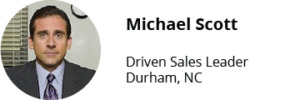
I’m on the road all the time trying to take multiple sales calls at once. I need to see my family.
- Sales requires a lot of travel. Michael wants to book a stay-cation to be with the family but doesn’t know when the best time is to take time off from his busy schedule.
- Being on the road, there is no way for him to quickly look at vacation scheduling on his phone/tablet.
Observation #2:
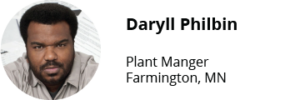
I’m ready for a vacation right now!
- Plant management in a plant running at 110% of capacity is exhausting. Daryll knows this and wants to plan a vacation but doesn’t know when the best time is and/or how to request it.
- Daryll is not in SAP very much and finds CATS very hard to use. (and he doesn’t even know what CATS means, but guesses it doesn’t relate to kittens)
Observation #3:
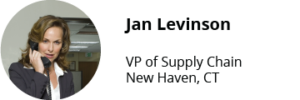
I mean, I never take vacation…I’m always working.
- Jan thinks taking vacation means things will not be completed.
- Jan wears her unused PTO balance like a badge of honor.
Personas
Who are the real people that are conducting the process? What is the typical attire, work environment, background & other relevant details?
You can take these very far if you like, creating stories, photos, backgrounds and more. But at the least, we try to draft a small picture. Here are a few sample categories. Fill in your own example based on the observations you conducted. Here is one example:
- Attire: Super Stylish
- Environment: Only in a cube for now, but will soon have an awesome corner office.
- Education: My real passion is theatre, so I went to NYU.
- Schedule: I work constantly. Even when I eat my gluten-free pancakes for breakfast.
Point of View
Ultimately to ideate and prototype, the solution must be defined as a point of view and problem statement. Typically stated as “User persona A, wants to achieve business value B by using process C, but it’s difficult because of reason D”.
The Point of View can be thought of as the real requirement. This is usually different than the problem statement, or at least it is now confirmed. Write this down on your paper.
All people at Acme, including corporate, sales, and people in the plant need a way to take vacation, because surprisingly people don’t take what they need and productivity is hurt.
Ideate
Everyone in the session contributes by rapidly capturing several ideas (visually or otherwise) in short sprints, roughly 5 minutes. In the end, the team will collectively discuss and debate elements of these ideas.
While I believe that observation is the most crucial part of Design Thinking, I think the Ideate phase is the most fun. This is where we rapidly create ideas and sketch them on paper. The key is speed, not quality. Come up with a lot of ideas. We’ll share them once everyone has had a chance. Let’s take 15 minutes, go!
Here is one that I did:
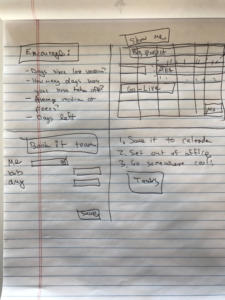
Share and talk about these. Record the main themes:
-
- Shared calendars would be great
- Needs to work offline
- Needs the facts — how many days are available. Dashboards.
- Find ways to encourage people to take it. Stats on the boss?
- Show a calendar, and propose the right times
Prototype (Low Fidelity)
Incorporating all of the positive elements of the ideation, each participant creates very low fidelity paper prototypes. After prototypes are created and refined, they can become the starting point of a high fidelity wireframe prototype which will be discussed in one of the subsequent steps.
Suggestions
-
-
- For Fiori, first study the SAP Design Guidelines
- For Fiori, identify at least one basic template to start with, such as Master / Detail, or Workflow.
- Use a large whiteboard, or paper.
- Don’t worry about getting every field perfect, but focus on the major elements of flow. We will walk our end users through this and they should intuitively know where to go.
- If using mobile, it may be beneficial to have a wireframe for both desktop and mobile, or just mobile to understand the unique flow.
- Use call-outs to describe actions.
- Ideally, export the photo to BUILD tool to conduct a user study.
-
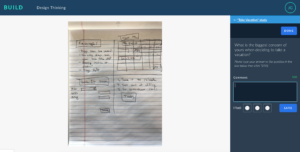
Prototype (High Fidelity)
After the low fidelity design is complete and tested by the group, we usually do the high resolution design in the few days following the session. The high fidelity design will allow you to get into detailed discussions about fields, behavior, buttons, and more.
We like to use SAP BUILD for this step.
Here’s how our High Fidelity mockups look:
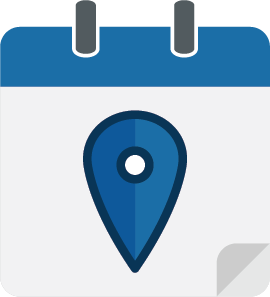
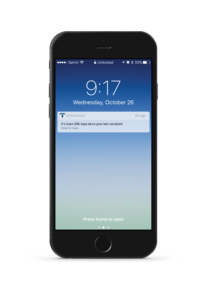
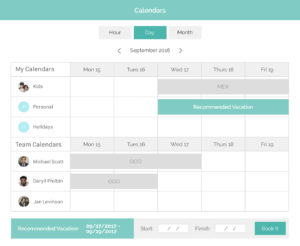
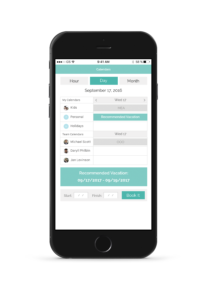
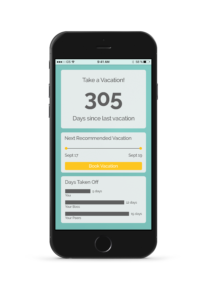
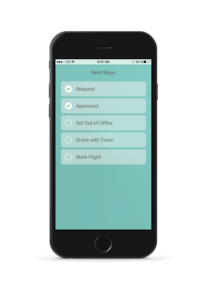
Test
It’s so much easier to test things and make changes now with user studies than it is later. We use BUILD to do this and watch how users work their way through these applications. They put in comments, see if things are missing and we go through one or two revisions.
Now what?
You now have a beautiful, simple high resolution design ready to go! The business users love it, end users love it, you love it, buy-in is at an all time high.
What we do next is typically assemble an agile build team, build a backlog, and try to get the MVP finished as quickly as possible. The sooner you get the MVP back to people the better.
Keep learning, keep iterating, and keep making software that solves real problems, for real people.
If you are interested in viewing similar articles, visit our blog, here.
View our LinkedIn, here.